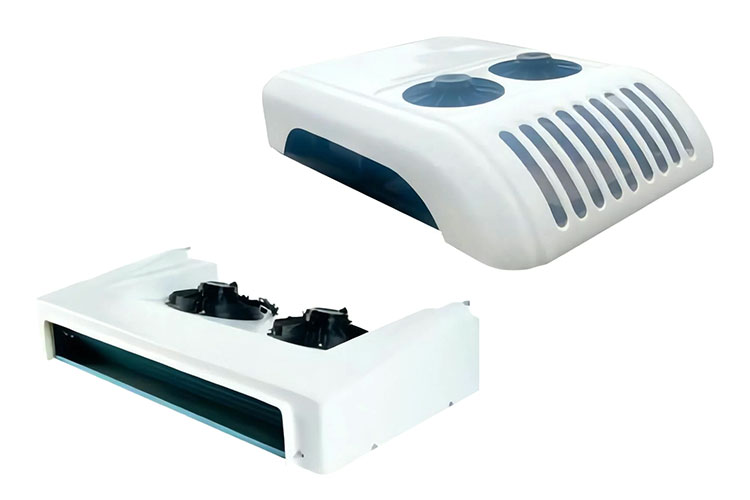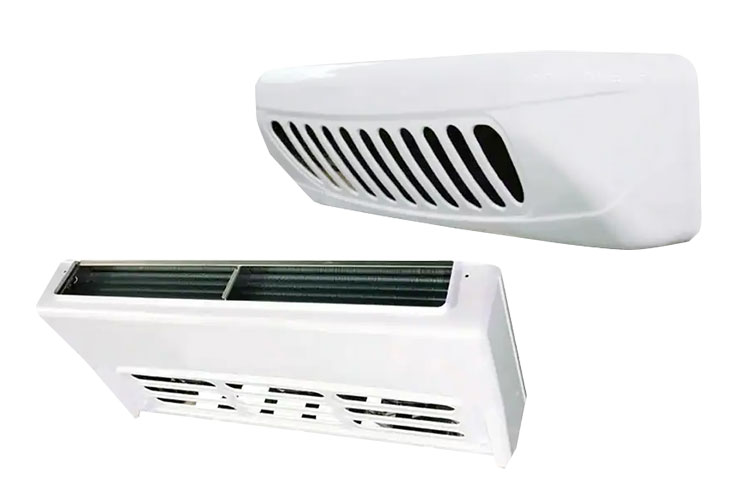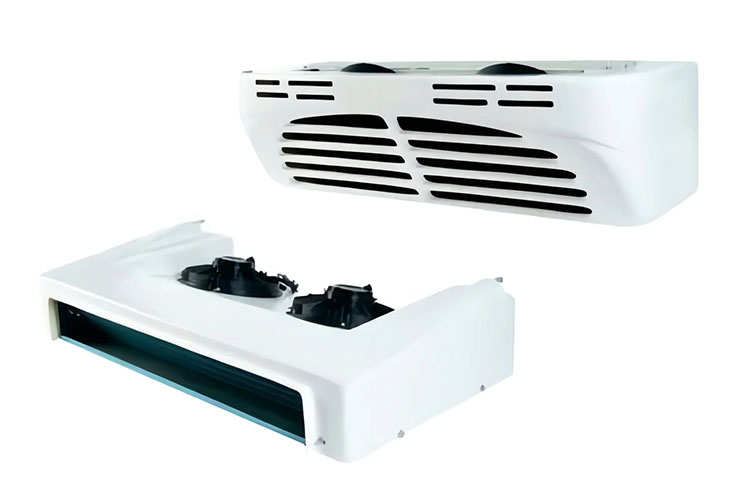Home » Truck & Trailer Solutions » Truck & Trailer Kits




Truck refrigeration units are designed to maintain a specific temperature range within the cargo area of a truck for transporting perishable goods. These units are essential for industries that require temperature-sensitive transportation, such as food, pharmaceuticals, and medical supplies.
Key Components of a Truck Refrigeration Unit
- Compressor
The compressor is the heart of the refrigeration unit, responsible for circulating the refrigerant throughout the system. It compresses the refrigerant gas, increasing its pressure and temperature.
- Condenser
The condenser cools the hot, high-pressure refrigerant gas (from the compressor) and turns it into a high-pressure liquid by releasing heat to the surroundings.
- Evaporator
The evaporator absorbs heat from inside the cargo area by allowing the low-pressure refrigerant liquid to evaporate and cool the air in the truck.
- Power Source
- Diesel-Powered Units: These refrigeration units have their own diesel engine, providing independent power for refrigeration. This configuration is often used for long-haul transportation or trailer-mounted units.
- Electric-Powered Units: These use electric power, either from the truck’s battery, an external power source (shore power), or both. Electric-powered systems are often quieter and more energy-efficient.
- Integrated (Direct-Drive) Systems: These systems are powered by the truck’s engine via a PTO (Power Take-Off) system. They are common in local deliveries, where the truck runs continuously.
- Control System
Allows operators to set and monitor the desired temperature.
- Airflow System
Help distribute cold air evenly across the entire cargo area. The airflow design is essential to prevent cold spots or uneven temperature distribution.


Truck Transportation Requiring Refrigeration
- Food transportation
Frozen foods, dairy products, meats, vegetables, and fresh fruits require precise temperature control to ensure they remain fresh during transportation. - Pharmaceuticals and medical supplies
Certain medications, vaccines, and medical supplies need to be transported within a specific temperature range to maintain their effectiveness. - Flowers and plants
Perishable plants, flowers, and certain seeds also require refrigerated transportation to prevent spoilage. - Chemicals
Certain chemicals, especially those used in laboratories or industrial applications, need to be kept within a certain temperature range.

Types of Refrigeration Units
01. Front-mounting Unit VS Top-mounting Unit
Front mount refrigeration units and top mount refrigeration units are two common configurations for truck refrigeration systems. Each has its specific advantages and is chosen based on the type of transportation, operational requirements, and the vehicle design.


| Feature | Front-mounting Units | Top-mounting Units |
|---|---|---|
| Mounting Location | Mounted at the front of the truck or trailer | Mounted on the roof of the truck or trailer |
| Cooling Capacity | Higher capacity, suitable for larger trucks and trailers | Lower capacity, best for smaller vehicles or urban deliveries |
| Space Efficiency | Reduces available cargo space at the front | No impact on cargo space, ideal for maximizing interior room |
| Risk of Damage | Vulnerable to road debris and impacts | Less vulnerable to road damage |
| Airflow Distribution | Direct airflow from front to rear, more even distribution | Air distribution can be less uniform across the cargo space |
| Fuel Consumption | Higher fuel consumption (diesel-powered or PTO-driven) | Typically more fuel-efficient, especially with electric units |
| Maintenance | Easy access for maintenance at the front | More difficult to access, especially for taller vehicles |
| Ideal for | Long-haul transportation, large refrigerated trucks or trailers | Smaller vehicles, urban deliveries, tight spaces |
| Cost | Typically higher due to larger capacity and complexity | Generally more affordable and suitable for smaller operations |
| Vulnerability to Low Bridges | Less prone to clearance issues | Height risk when passing under low bridges or structures |
02. Independent Unit vs Non-Independent Unit
The independent refrigeration unit and non-independent refrigeration unit (often referred to as integrated refrigeration unit) are two primary types of refrigeration systems used in refrigerated trucks and trailers.


| Feature | Independent Refrigeration Unit | Non-Independent Refrigeration Unit |
|---|---|---|
| Power Source | Diesel engine or electric motor (standalone) | Powered by truck’s engine (PTO or hydraulic system) |
| Cooling Capacity | High (suitable for larger cargo volumes) | Moderate (suitable for smaller to medium-sized loads) |
| Fuel Efficiency | Moderate to low (depending on diesel/electric use) | High (uses truck’s fuel) |
| Temperature Range | Wide range, often from -20°C to +10°C | Wide range, but efficiency may drop during idle time |
| Idle Time | Can operate without the truck running | Requires truck engine to be running for refrigeration |
| Flexibility | High (can be used for standalone trailers or containers) | Low (tied to the truck and its engine) |
| Cost | High (due to standalone engine or motor) | Lower (integrated into the truck) |
| Applications | Long-distance hauls, multi-temperature transport, trailers | Local/regional deliveries, city-based operations |
| Maintenance | Higher complexity and cost (due to separate engine) | Simpler maintenance (integrated with truck) |
Maintenance Requirements for Refrigeration Units
| Maintenance Task | Frequency | Notes |
|---|---|---|
| Check/recharge refrigerant levels | Every 6 months or as needed | Check for leaks if refrigerant is low |
| Clean condenser coils | Every 1–3 months | Clean more frequently in dusty areas |
| Inspect and clean air filters | Every 1–3 months | Replace filters as needed |
| Inspect compressor and hoses | Every 6 months | Check for wear, cracks, or leaks |
| Inspect evaporator coils | Every 6 months | Clean if necessary, check for ice buildup |
| Check temperature sensors | Annually | Calibrate sensors if necessary |
| Inspect belts and hoses | Every 6 months | Replace if worn or cracked |
| Check and clean fans | Every 6 months | Ensure proper airflow |
| Check oil levels and quality | Every 6 months | Top up or replace if needed |
| Full system check (professional) | Annually | Professional inspection and servicing |
If you are interested in a specific type of refrigerated truck body kit and are ready to start your own refrigerated truck business, we offer a comprehensive range of high-quality solutions.


